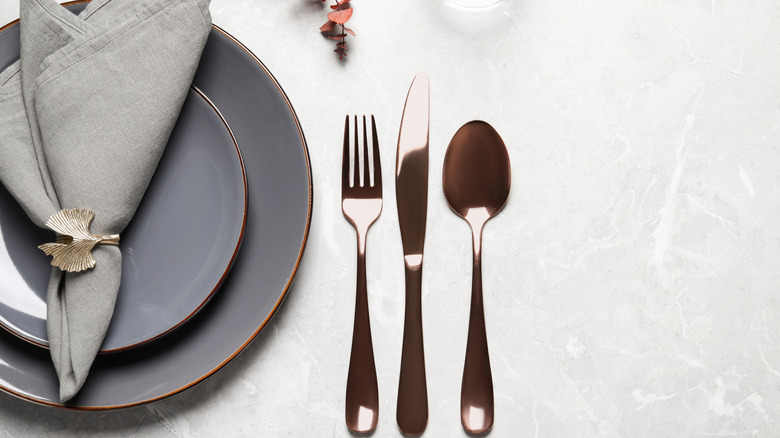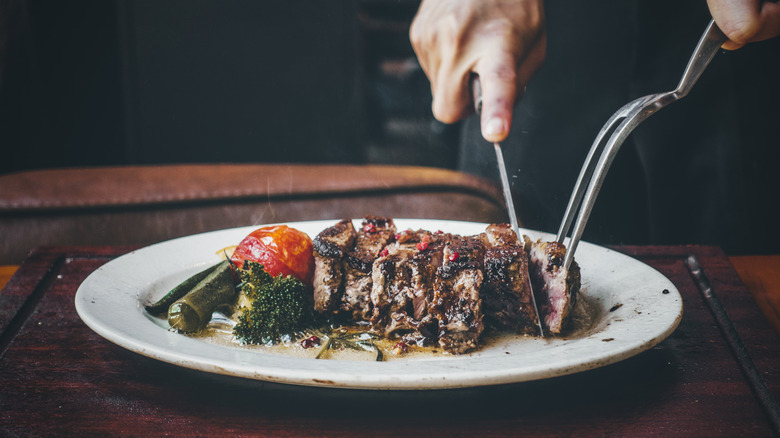You've Probably Been Breaking One Food-Cutting Etiquette Rule
There are plenty of food and dining etiquette rules you need to stop breaking, so it can be a little overwhelming knowing where to start. However, there's one food-cutting rule you may have been breaking. The behavior in question? Pre-cutting all of your food before eating it.
Whether it's steak, fish, or even your greens, pre-cutting your food inevitably causes the food to cool down more quickly — think of all that precious heat escaping as steam. Now, this isn't a bad thing in and of itself, as some restaurants present their food piping hot as per food safety requirements, but it can have adverse effects on the quality of your meal overall. Typically, you want your restaurant experience to be relaxed, especially if you're out on a date night or catching up with friends. By cutting up all of your food as soon as it arrives, you're more likely to eat it faster to keep up with that quickly escaping heat. This can rush your meal, and it may (consciously or unconsciously) put pressure on your fellow diner(s) to step on it with their own food.
Not to mention, cutting up food is most commonly associated with children as they are looking to achieve the very goal of their food cooling down faster (and make it safer and easier to eat with bite-sized pieces). For many parents, it's hard to switch off from a caretaking mindset even without the kids present, but try to be in the moment and enjoy your time out.
More cutlery etiquette
You may not even realize it, but the way you hold your silverware and cut your food can actually communicate quite a lot. Positioning your knife and fork parallel to one another in the middle of your plate (forming an 11 shape) indicates that you are done with your meal, and wait staff will understand this message even if you still have food.
If you cross your cutlery in towards each other, creating two-thirds of a triangle, don't be surprised if your waiter ignores your plate when clearing others, as this is usually used to show that you are taking a break from your food, but you are not entirely finished. For next-level communication skills, you can position your knife and form facing the right, forming an equal shape, which tells the waiter that you found your meal to be excellent.
According to British etiquette, you want to ensure that your knife and fork stay on your plate rather than rest on the table between bites. As for the eating itself, tradition differs depending on where you are. Both European and American practices start off with the fork in the left hand, but Europeans leave it there the whole time while Americans transfer the fork into the right hand for the actual eating of the food.


